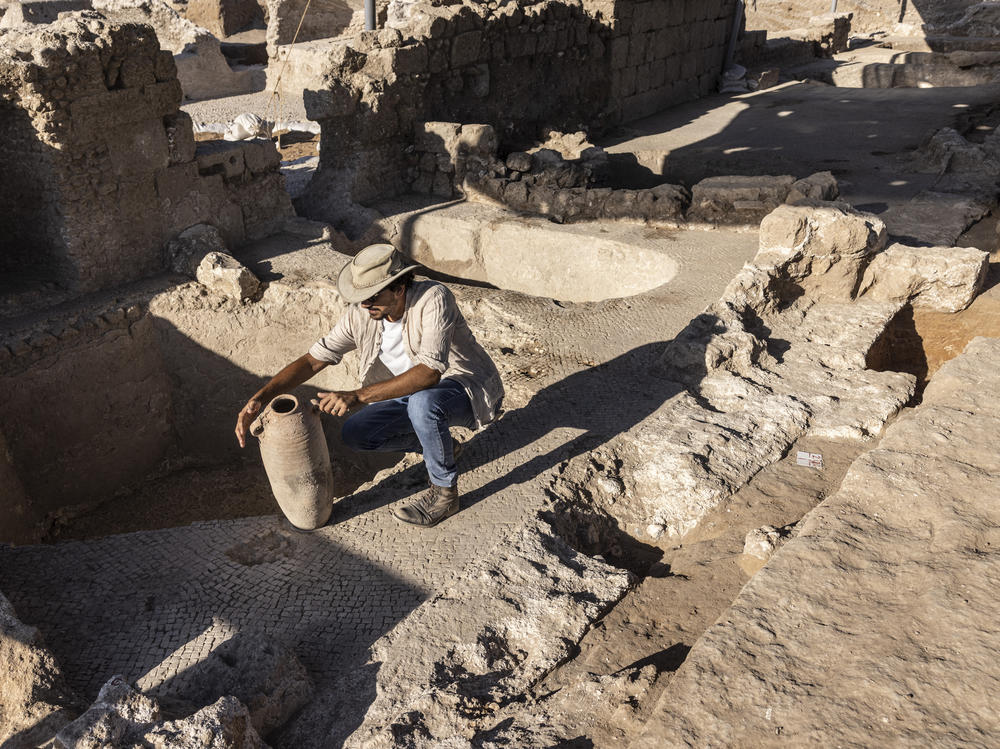Section Branding
Header Content
Massive Byzantine-era winery discovered in Israel
Primary Content
Near a soccer pitch and a suburban neighborhood in central Israel, archaeologists say they discovered the world's largest known Byzantine-era winery.
The winery, dating back 1,500 years, is believed to have produced one of the finest white wines of the Mediterranean at the time. It was widely praised in Byzantine-era literature and known as vinum Gazetum or Gaza wine because it was exported from the ancient port city near modern-day Gaza.
Archeologists found a large complex of five winepresses, four large warehouses where the wine was aged, kilns where the clay wine jugs were fired, and tens of thousands of broken pieces of jugs.
They estimate the winery produced between two to three million liters of wine a year.
"The proportions here are incredible," said Elie Haddad, an Israel Antiquities Authority archaeologist who co-directed the two-year dig on the outskirts of Yavne, south of Tel Aviv. Archaeologists were called in to survey the area before an overpass is built there.
Each winepress found covers an area of about 2,400 square feet. Around the treading floor, where grapes were crushed by foot, were compartments for fermenting the wine and large octagonal vats that collected the wine.
The dig also unearthed even more ancient wine presses about 2,300 years old, pointing to a longstanding tradition of winemaking in the area. The Talmud speaks of the "vineyard of Yavne" where Jewish religious sages gathered after the destruction of Jerusalem in 70 A.D.
The ancient cosmopolitan city of Yavne was home to a patchwork of Jews, Samaritans, Christians and others. Who operated the winery is unknown, but archaeologists say the large, intricate conch-shell decorations suggest the owners were wealthy.
The archaeologists even found several, completely intact, slender clay amphorae where the wine was aged and stored for export.
The same kind of long clay jugs have also been discovered in the Gaza Strip, where they are displayed in a museum — testifying to a time when Gaza was not a blockaded area of conflict but rather a bustling portal to the ancient world.
Copyright 2021 NPR. To see more, visit https://www.npr.org.

